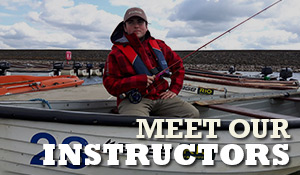During these very uncertain times, like no one has seen before. We have unfortunately seen the temporary pause of Fly Fishing on our much-loved reservoirs.
However, this doesn’t mean that we can’t spend our time inside reading, learning and thinking about fishing, as I know that’s what I am doing.
In this blog I am going to look at a key part of a cast that will land you more fish and it is often overlooked. It’s called “the drop” this is the time after your cast where the flies fall through the water column without being retrieved. The reason this is so effective is that the fly or flies are falling naturally through the water. Often with very little resistance giving the flies a very natural presentation.
“The drop” will get you more fish especially when waiting for the flies to get to a certain depth. For example, you have found the fish to be holding about 5ft down in 15ft of water and you have cast out and are waiting for your flies to get to the zone. However not all the fish will be at 5ft down, there is likely to be fish who are sitting just under the surface and your flies dropping in front of them will induce a take. So, you must be ready for when they do, firstly you need to make sure that you are in contact with the flies as they fall. This might mean a reduction in distance to ensure that the flies have turned over and you are in direct contact with them as soon as they hit the water.

A good example of a lovely line meaning direct contact with the flies.
After this the next step is to watch that line like a hawk, like mentioned in the buzzer fishing blog (http://www.flyfishtuition.co.uk/latest-report/) watch that loop of line for any movement. As this will indicate if the fish has taken the fly, as its likely they will just take the fly without moving off as it falls in front of them. Almost like a carp sucking in bait, the only way you will know this has happened if you are in direct contact with a nice straight line and watching the loop and the change in tension of the fish taking the fly will cause the line to tighten, but not necessarily move away. This will cause the loop to lift and hold 45 degrees to the water, once you see this strike as there will be a fish on the end. Perfect angle of the rod for watching the loop of line.

Perfect angle of the rod for watching the loop of line.

Above is a picture of what will hapen to the line when you get a take, just before striking.
My personal favourite way of fishing the drop is to use a midge tip with 3 buzzers and a blob on the top dropper. The amount of takes you get in the blob as it descends through the water, being pulled down by the buzzers and the midge tip. However, the drop is also fantastically effective on sinkers with boobies as the sinker begins to pull the flies down, as you wait to get to the depth you want to fish.
This tactic is also fantastic for pressured fish who have seen a variety of moving flies.
Here is the proof, a fantastic Draycote rainbow taken on a cormorant near X Buoy fishing on the drop, using a sinking line during the hot summer months. This fish was taken while helping someone practice for a major match and the water had seen a lot of pressure. Yet the drop produced the goods for this amazing fish.

Lets hope we are all back on the water soon to practice this deadly method.
Stay safe & Tightlines see you all soon.
Tom Bird Draycote Manager

